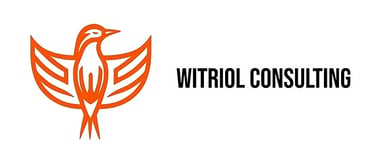The Impact of ERP (SAP and others) on Indirect Cost Management for Government Contractors
Government contracting is a highly regulated and competitive space, requiring contractors to maintain stringent financial oversight, cost allocation, and reporting. Effective indirect cost management is critical for compliance and profitability, as contractors must accurately track and allocate costs related to overhead, fringe benefits, general and administrative (G&A) expenses, and more. Enterprise Resource Planning (ERP) systems have become a game-changer in this landscape, providing real-time data integration, automation, and financial visibility that help contractors streamline cost management. By leveraging ERP technology, contractors can optimize their indirect cost allocation, enhance contract management, and improve overall financial health. This blog explores how ERP systems impact indirect cost management for government contractors, covering key areas such as contract management, overhead, fringe benefits, G&A costs, contract vendor debt, and miscellaneous receivables.
DATA DRIVENMICROSOFTEQORGANIZATIONMENTORCOMMAND ECONOMYSTRATEGIC PARTNERSHIPSMANAGEMENT CONSULTINGTRADITIONAL ECONOMYMERGERSMARKET ECONOMYCONSULTINGPARTNERSHIPSGROWTHACQUISITIONSLEADERSHIPERPSTRATEGYECONOMICSFEDERAL CONTRACTINGGOVERNMENT CONTRACTSMARKETING STRATEGYTEAMWORKFINANCECOMPLIANCECLOUDCLOUD COMPUTINGORACLESAPAICLIENT RELATIONSHIPSFEDERAL CONTRACTS
Shaun Witriol
2/8/20254 min read


The Impact of ERP (SAP and others) on Indirect Cost Management for Government Contractors
Introduction
Government contracting is a highly regulated and competitive space, requiring contractors to maintain stringent financial oversight, cost allocation, and reporting. Effective indirect cost management is critical for compliance and profitability, as contractors must accurately track and allocate costs related to overhead, fringe benefits, general and administrative (G&A) expenses, and more.
Enterprise Resource Planning (ERP) systems have become a game-changer in this landscape, providing real-time data integration, automation, and financial visibility that help contractors streamline cost management. By leveraging ERP technology, contractors can optimize their indirect cost allocation, enhance contract management, and improve overall financial health.
This blog explores how ERP systems impact indirect cost management for government contractors, covering key areas such as contract management, overhead, fringe benefits, G&A costs, contract vendor debt, and miscellaneous receivables.
Understanding Indirect Costs in Government Contracting
Indirect costs are those that cannot be directly attributed to a specific contract but are necessary for overall business operations. Government contractors must classify and allocate these costs in compliance with Federal Acquisition Regulation (FAR) and Cost Accounting Standards (CAS). The main categories of indirect costs include:
Overhead Costs: Expenses related to contract performance but not tied to a specific project, such as rent, utilities, and IT support.
Fringe Benefits: Costs associated with employee benefits, including health insurance, retirement contributions, and paid leave.
General & Administrative (G&A) Costs: Expenses related to overall business operations, such as executive salaries, legal fees, and marketing.
Contract Vendor Debt: Outstanding payables to subcontractors and vendors for work performed under a contract.
Miscellaneous Receivables: Other non-contract-related receivables, such as reimbursements or tax credits.
Managing these costs effectively is crucial for ensuring compliance, maintaining profitability, and optimizing cash flow.
How ERP Enhances Indirect Cost Management
A well-implemented ERP system can transform how government contractors manage indirect costs by integrating accounting, procurement, human resources, and contract management into a single, automated platform. Below are key areas where ERP significantly impacts indirect cost management:
1. Automating Cost Allocation and Compliance
One of the biggest challenges for contractors is accurately allocating indirect costs to contracts while maintaining compliance with DCAA (Defense Contract Audit Agency) and FAR regulations. ERP systems help by:
Automating cost pools and indirect rate calculations to ensure compliance with government cost accounting requirements.
Providing real-time visibility into cost allocations, reducing errors and manual adjustments.
Generating audit-ready reports for DCAA and other oversight agencies.
2. Streamlining Contract Management
ERP solutions integrate contract management with financial and operational data, ensuring contractors can efficiently monitor budgets, billings, and expenditures. This leads to:
Improved cost tracking per contract, preventing overruns and ensuring accurate revenue recognition.
Automated invoicing and billing, reducing delays and increasing cash flow efficiency.
Integration with procurement systems, ensuring that contract expenses align with funding and compliance requirements.
3. Optimizing Overhead Cost Management
Overhead expenses can quickly erode profitability if not effectively managed. ERP helps control these costs by:
Providing detailed expense tracking, enabling contractors to analyze overhead trends and reduce unnecessary spending.
Automating budget controls, ensuring overhead costs remain within allowable thresholds.
Facilitating indirect rate forecasting, allowing for proactive cost management and pricing strategies.
4. Managing Fringe Benefits Efficiently
Fringe benefit costs are an essential component of indirect costs, and their mismanagement can lead to compliance issues. ERP systems streamline fringe cost management by:
Integrating payroll and benefits administration, ensuring accurate cost tracking.
Automating benefit allocations across multiple contracts based on employee labor distribution.
Providing real-time workforce cost analysis, helping management make informed hiring and compensation decisions.
5. Enhancing G&A Cost Control
ERP systems centralize G&A expense tracking, improving transparency and cost control. Key benefits include:
Real-time financial reporting, enabling leadership to track and optimize administrative spending.
Expense policy enforcement, reducing non-compliant expenditures.
Improved budgeting and forecasting, aligning G&A costs with business growth strategies.
6. Managing Contract Vendor Debt
Government contractors often work with subcontractors and suppliers, leading to outstanding payables. ERP systems help manage contract vendor debt by:
Tracking vendor payments and outstanding balances, ensuring timely payments and strong vendor relationships.
Automating accounts payable workflows, reducing manual errors and improving efficiency.
Enhancing cash flow forecasting, ensuring sufficient funds for vendor obligations.
7. Improving Miscellaneous Receivables Tracking
ERP solutions streamline the management of miscellaneous receivables by:
Centralizing receivables data, providing a clear view of outstanding payments.
Automating invoice generation and tracking, reducing revenue leakage.
Integrating tax and compliance tools, ensuring proper classification and reporting of receivables.
Case Study: How ERP Transformed Indirect Cost Management for a Federal Contractor
Company: A mid-sized government contractor specializing in IT services for federal agencies.
Challenge: The company struggled with manual cost allocation, compliance risks, and cash flow management.
Solution: Implemented an ERP system to automate indirect cost tracking, contract management, and financial reporting.
Results:
Reduced manual accounting errors by 40%.
Improved cost visibility, leading to 10% savings in overhead expenses.
Streamlined vendor payments, reducing outstanding contract vendor debt by 25%.
Best Practices for Implementing ERP for Indirect Cost Management
1. Choose an ERP System Designed for Government Contracting
Look for solutions that offer FAR, CAS, and DCAA compliance tools.
Ensure integration with payroll, procurement, and contract management modules.
2. Customize ERP to Fit Your Business Needs
Configure indirect cost allocation settings to align with your contract types and structure.
Set up automated workflows for invoice approvals, vendor payments, and expense tracking.
3. Train Employees and Foster User Adoption
Provide training on cost allocation rules, compliance requirements, and ERP best practices.
Encourage teams to use real-time dashboards for data-driven decision-making.
4. Continuously Monitor and Optimize ERP Usage
Regularly audit ERP reports to identify inefficiencies and cost-saving opportunities.
Adjust indirect rate calculations as business conditions change.
Conclusion
For government contractors, managing indirect costs efficiently is critical to financial health, compliance, and competitive success. ERP systems offer powerful tools to automate cost allocation, improve contract management, and optimize overhead, fringe, and G&A expenses.
By implementing an ERP solution tailored for federal contracting, businesses can reduce administrative burdens, enhance financial visibility, and ultimately improve profitability.
The future of government contracting belongs to those who leverage technology to streamline operations and ensure compliance. Investing in an ERP system is not just an upgrade—it’s a strategic move toward sustainable growth and long-term success.
💬 Call to Action: Like and follow Witriol Consulting on LinkedIn, Instagram, Facebook, and YouTube for more insights and strategies on effective leadership and time management.
Current Certifications
Small Local Business Enterprise (SLBE) - (San Diego)
Local Small Business Enterprise - (LSBE) - (Los Angeles)
Minority Owned Business (MBE) - (San Diego and Los Angeles, Federal)
Small Business (Micro) - (California)
Disadvantaged Business Enterprise - (California, Arizona, Oregon, Hawaii)
Small Disadvantaged Business - (Federal)
Asian Pacific Business Enterprise - (Federal)
Pending Certifications
8a - (Federal)
© 2024. All rights reserved.


certifications
consultations
